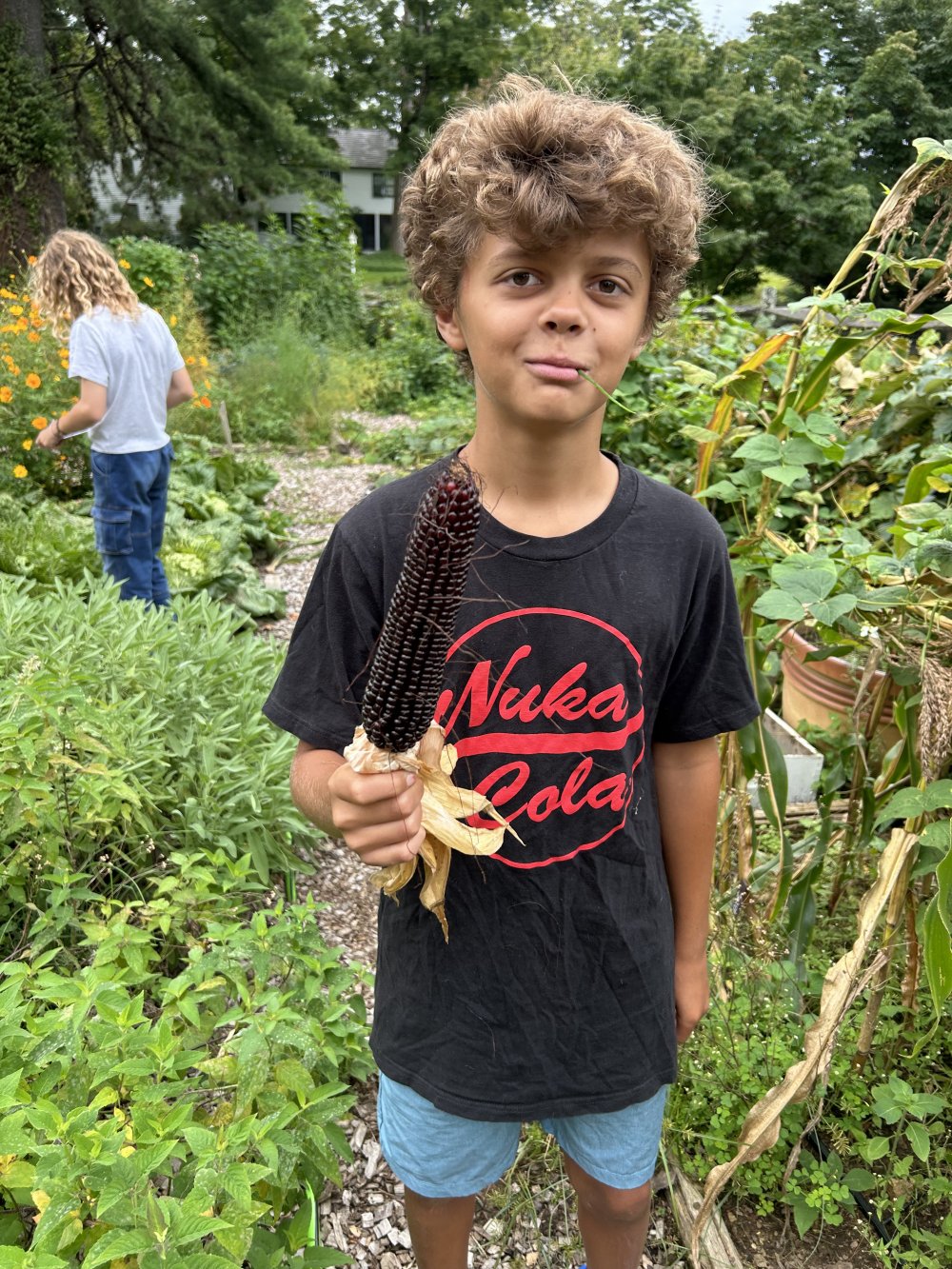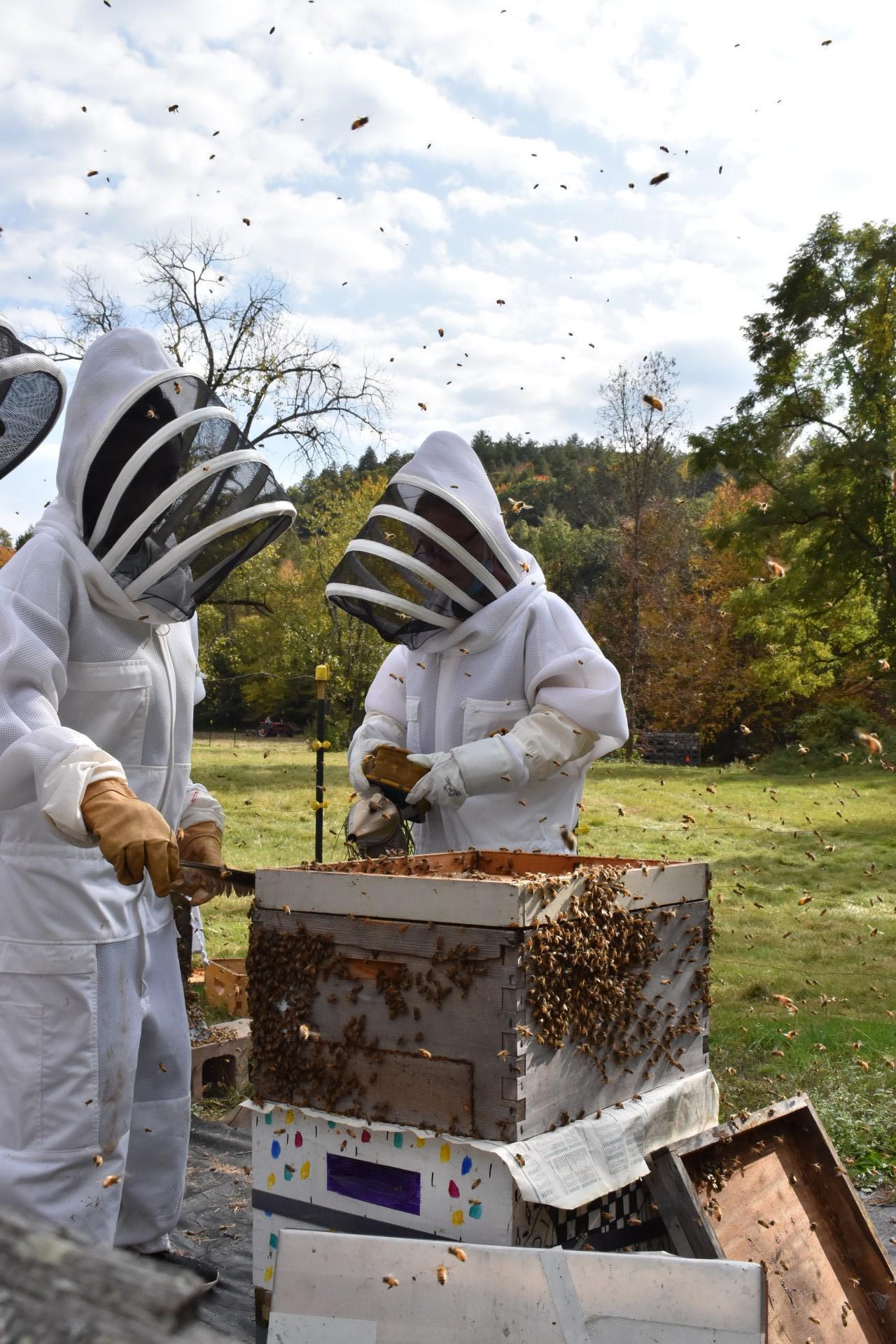Growing Up in the School Garden: A look at the role of the garden in the Adolescent Program - By Caren Ross, Director of the Adolescent Program
November 8th, 2024
The Millstream vegetable garden is a centerpiece of the MSGH Adolescent Program. It is a science laboratory, a source of culinary inspiration, a place to journal or sketch, and an opportunity to wonder at the marvels of soil and life, from microscopic fungi and bacteria, to pests and pollinators, to voles and rabbits. It is a place that calls for both physical exertion and the creative, collaborative energy to transform nature’s harvest into jams, jellies, pickles, and sauces to sell at market. In essence, the garden supports a young adolescent’s developmental need for movement, social endeavor, intellectual growth, and emotional well-being. It is a place to grow up.
From the quiet, chocolate-brown garden beds of winter to the abundant, tangled greens and colorful fruits of summer, the garden provides year-round work and inspiration. In late winter, when blotches of snow still dot the garden beds, the students pore over seed catalogs, planning with precision where and what to plant in the garden. They must consider best practices of crop rotation and natural fertilization, and what plants are companionable and grow better in proximity to their friends. Beans don’t like to share beds with onions, for example, tomatoes thrive alongside basil, and cucumbers are happy when nasturtium patrol their border, keeping pests away. What will sell at market is also part of the calculation, and the students review sales from the previous year to know what they’ll need to grow to make and sell pickled beets, dilly beans, tomato sauce, or rhubarb jam.
In the spring, the students start seedlings in the greenhouse, test nutrient and acidity levels in the soil, and amend the soil with compost. They experience the cyclical nature of matter as they move manure from the goat pen and chicken coop into the compost pile, where it mixes with leaves, egg shells, apple cores, and lots of other organic matter rich in carbon, nitrogen, and minerals. Students work the aged compost into the garden beds, enriching and fortifying the soil. They know the minerals in what they eat from the garden came from the soil they nurtured.
All the spring labor is rewarded in the fall, when students return to school to find that what they left behind as tidy rows of evenly-spaced little plants have burgeoned and flourished, their foliage dense and green, their vines crawling along the ground and climbing up posts, and their fruits and vegetables dangling from their stems. The students weed, feast on raw and cooked fresh vegetables, and preserve the harvest for sale to the community. Cartloads of greens go to the goats and chickens, whose excreta then goes back to the garden. In this way, nothing is wasted, as nature’s elements and minerals just cycle from manure to soil to plant to animal, with detours through air and water.
In the garden, it’s never a surprise to bump into our honeybees slurping nectar, or to stumble upon native bees, busily exchanging their pollinator services for fuel. It is in the garden where nature’s balance and beauty become abundantly clear and where students develop a synchronicity with the seasons and rhythms of the year. They learn to appreciate nature and to work hard with a sense of purpose. Because the garden invites student engagement on many levels – physical, emotional, cognitive, and social -- it educates the whole child in a quintessentially Montessori way.
Article Written by Caren Ross, Director of the Adolescent Program at MSGH














